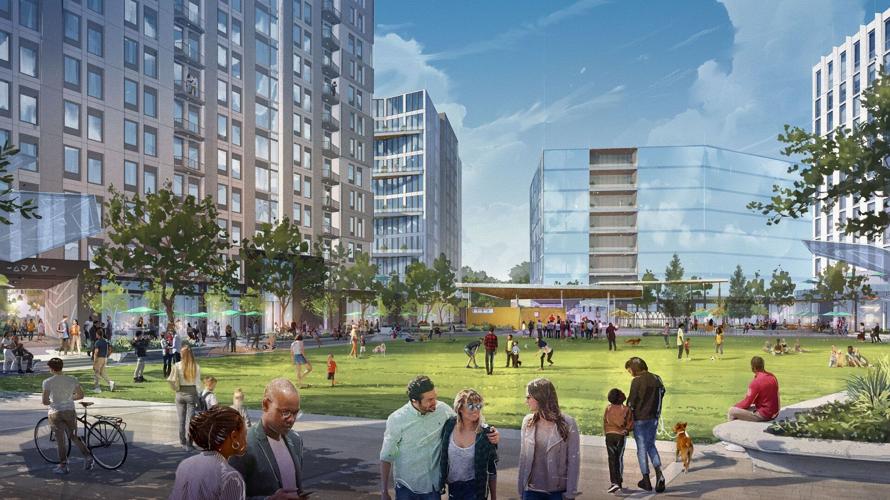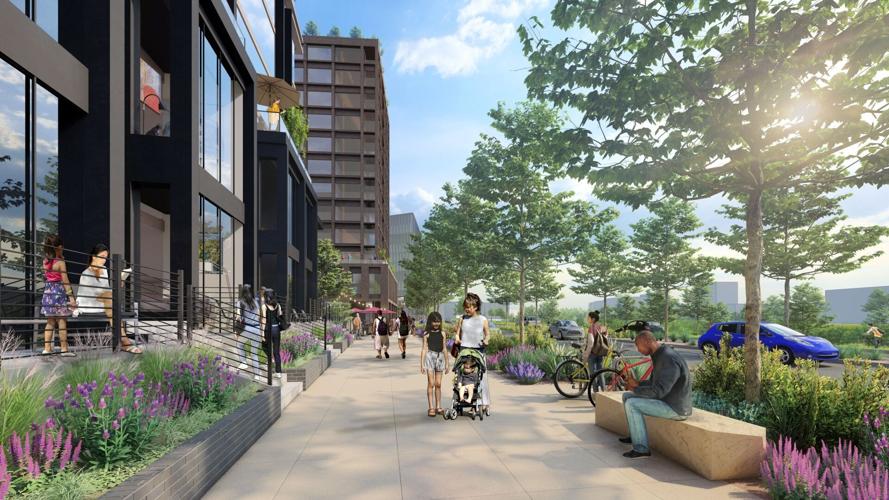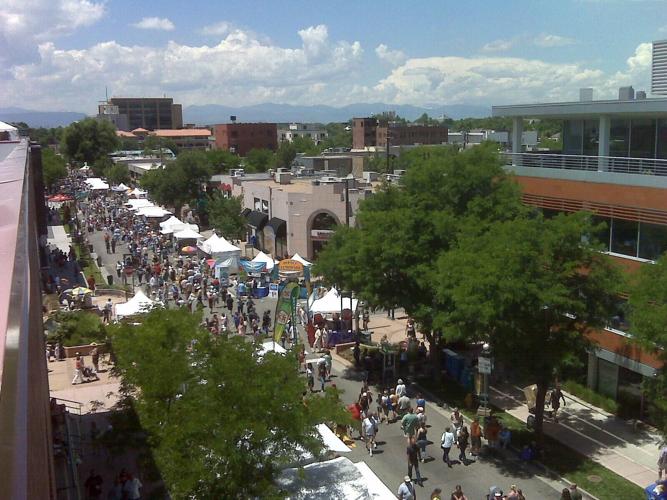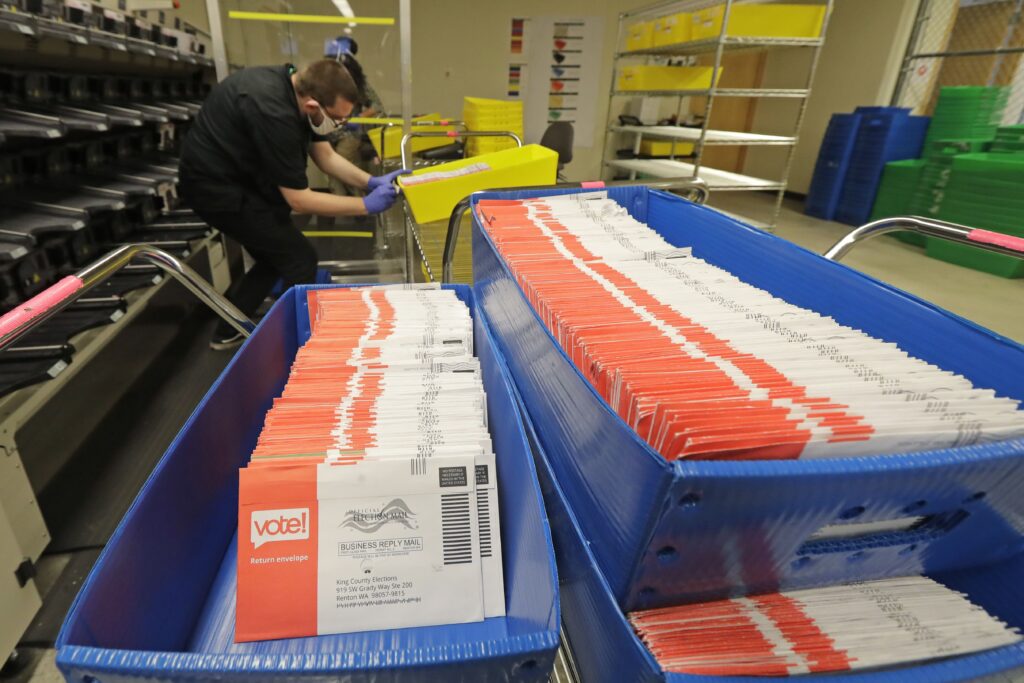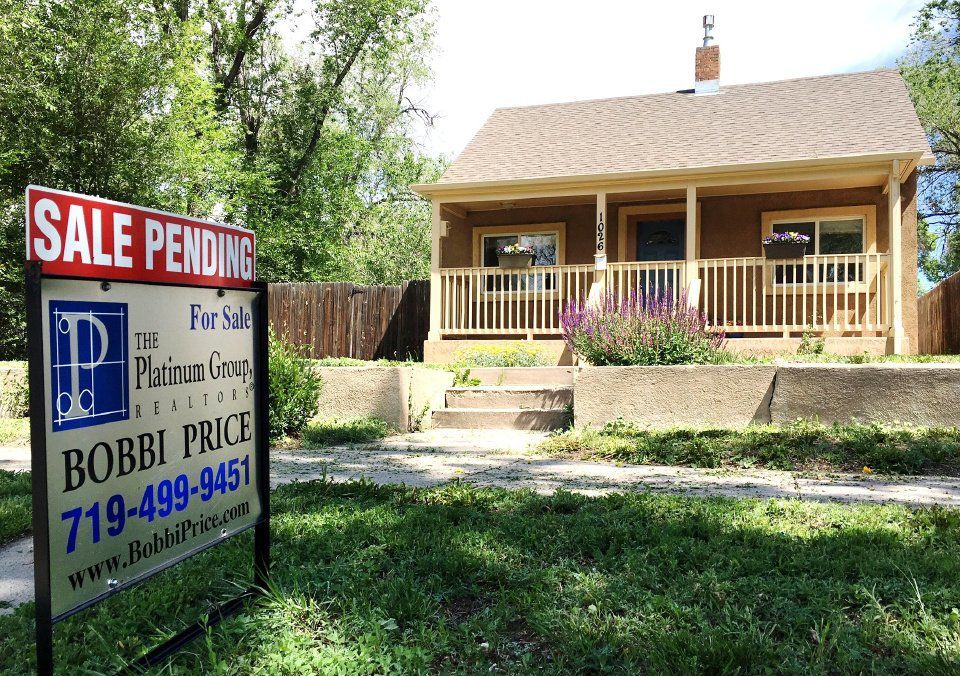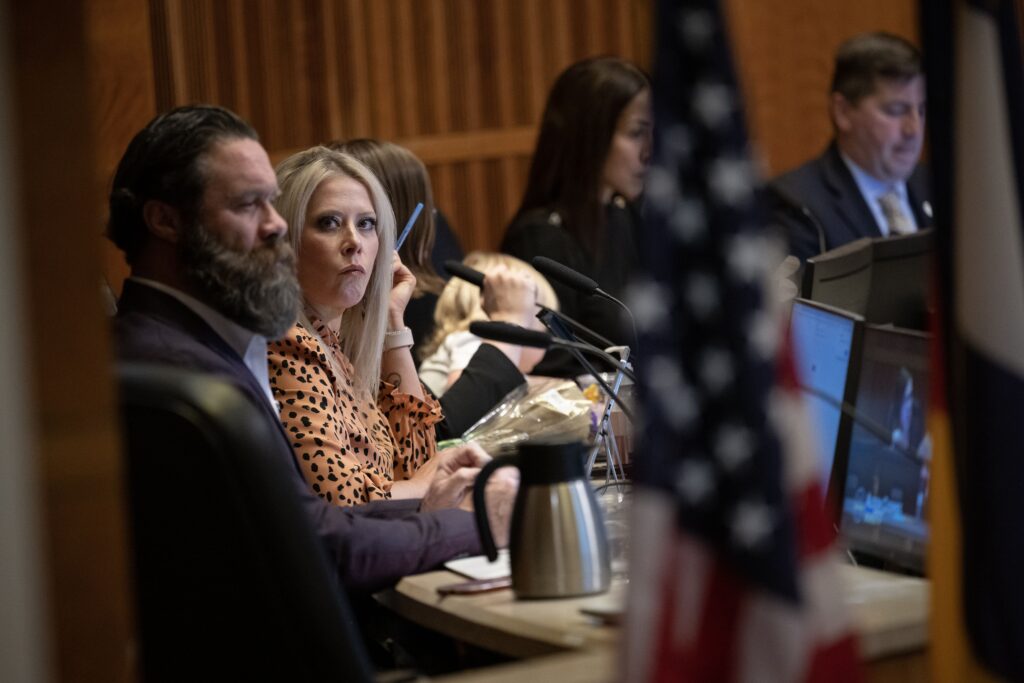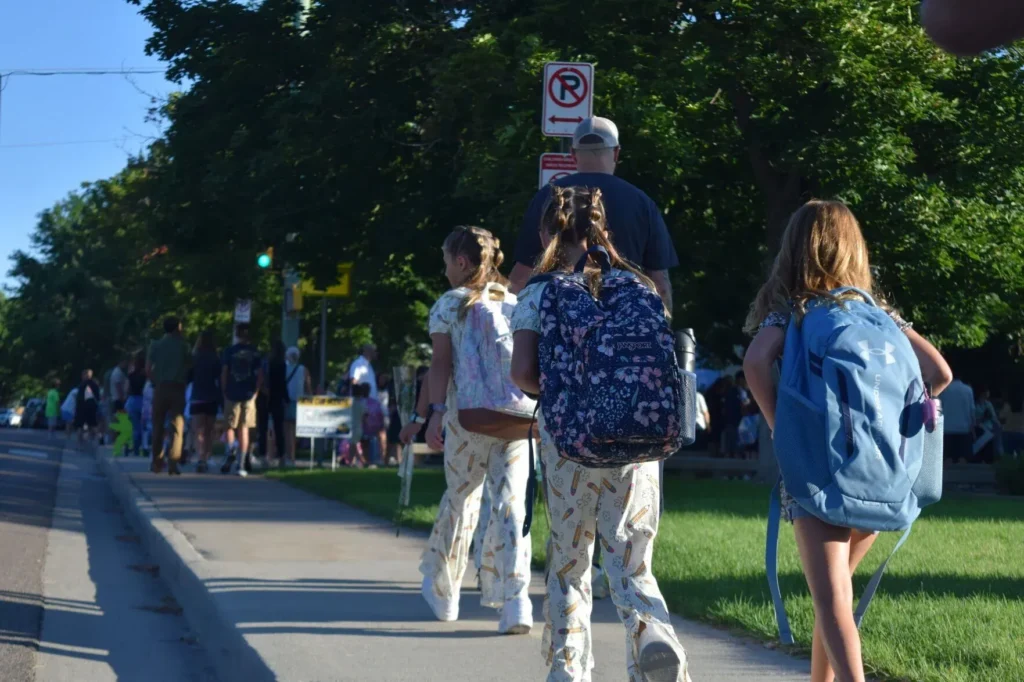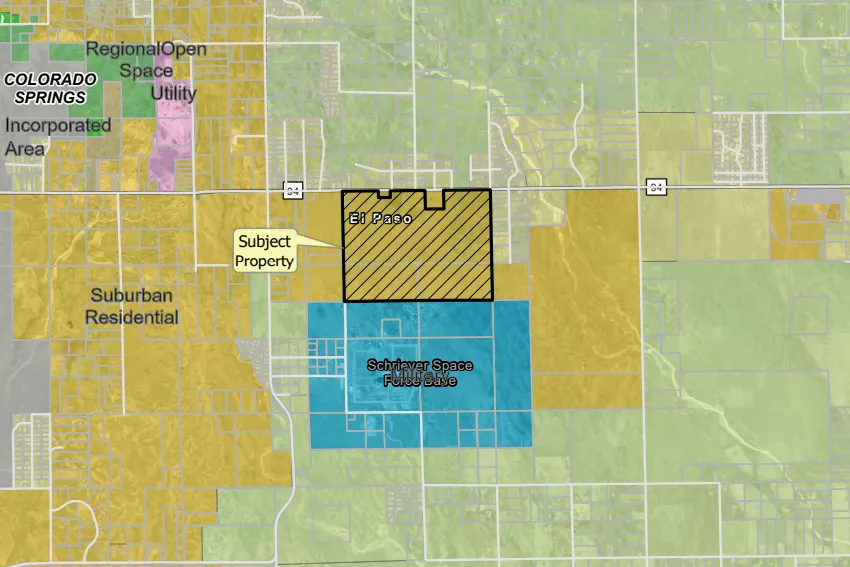Denver OKs massive Cherry Creek West redevelopment
The Denver City Council on Monday unanimously approved rezoning the west side of the Cherry Creek Shopping Center for a 13-acre mixed use community known as Cherry Creek West, giving the project the green light to start infrastructure work and design of the redevelopment’s public spaces and buildings.
Over a projected buildout that could span a decade, the development, as envisioned, could deliver 1.6 million square feet of offices and apartments to the site, filling a gap that spans from the Cherry Creek North shopping district south to the Cherry Creek Trail. The project would be almost entirely served by underground parking.
The redevelopment faced criticism from residents and neighborhood associations worried that Cherry Creek West would increase traffic in the popular thoroughfare connecting to downtown. They are also worried about the project’s high density.
Developers have argued that fears of congestion are overblown.
Neighbors who previously testified against the project voiced relief after gaining some concessions from the developer to prevent Cherry Creek West from growing even further in scale over the course of its 10-year expected buildout.
Developer David Steel of Western Development Group — who had sounded the alarm about traffic congestion the new development could bring — said Tuesday that neighbors had received assurance that the number and size of proposed buildings would stay at what East West Partners had promoted prior to approval.
“What everybody had been afraid of is that it would end up being seven 13-story buildings,” Steel told The Denver Gazette.
The developer welcomed the city’s decision.
“Approval by the Denver City Council means we can finally start bringing this vision to fruition,” said developer East West Partners Managing Director Amy Cara in a news release.
The concessions
The project is expected to deliver seven office and apartment buildings up to 13 stories high on the site of the former Bed Bath & Beyond store and the closed flagship Elway’s steakhouse on University Boulevard.
It could add up to 825 residences, 600,000 square feet of offices, 100,000 square feet for retail, four acres of open space and underground parking with more than 2,000 spaces.
About 100 units or 12% will be “affordable” for residents earning 60% of the area median income.
Cara told the City Council that the developer has committed to “piloting a traffic demand management plan” to reduce traffic by 17.5%.
“We want this to be a model for a 15-minute community where you don’t have to rely on a car for every trip,” she said on Monday.
All eyes on Denver City Council over massive Cherry Creek West project
As for density, Cara said, “We don’t want to spread our density like peanut butter.”
Only four buildings will go to the maximum 13-story height, Cara told councilmembers about commitments made in a community benefits agreement.
The signed developer agreement and a declaration of restricted covenants limits the project to seven buildings, with two of three of the buildings at the back of the project nearest to Cherry Creek Shopping Center topping out at 13 stories, and with two facing south University Boulevard coming in at eight stories. Two centrally situated buildings will come in at 11 stories and 13 stories respectively.
The extensive buildout time for the project, Steel told The Denver Gazette, would put pressure on any developer to keep maximum flexibility to accommodate changes in the market.
Steel, who had developed some of the 8.5 million square feet of buildings that had sprung up in Cherry Creek North over the past decade, noted that none of Cherry Creek West’s buildings has been actually designed yet, and that the developer could encounter numbers of challenges over the course of buildout.
“They’re going to have to excavate the whole 13 acres at the front end to do the subgrade (underground infrastructure,),” Steel said. “They don’t have those numbers yet, and it will be strikingly expensive to create parking underground for 2,000 cars. It will be like a little city down there.”
Steel added that those and other costs, including from new Energize Denver initiatives that impose strict energy requirements on buildings in excess of 25,000 square feet, will impact how much the developer will need to charge for rents when its office and other commercial spaces are readied for tenants.
“They’re going to have to get $90-a-foot for rent, including triple nets,” Steel predicted. “I don’t see (such rates) happening anytime soon. Most (lease prospects) will sit back and say, ‘This is like Manhattan.’”
Community leaders around Cherry Creek have noted the importance of the shopping center and Cherry Creek North to city tax revenues, at a moment when Denver is scouring for sources of income. Cherry Creek has been an attractive revenue generator for the city — more than $112 million in taxes during last year alone.
Comments by supporters at a zoning hearing echoed a rationale that greater density is a solution for many of Denver’s urban problems. The reasoning is encompassed in the “15-minute city” idea — widely quoted in support of Cherry Creek West — envisioning a community where employers, shops, schools, medical care, and recreation all lie within a 15-minute walk, bike or bus ride from where residents live.
Opponents are widely skeptical about “density” as a cure-all, and about rapid transit as a means to enable that. Several earlier cited a kind of circular logic embedded in the idea, along the lines of “we need more residents to serve buses,” and then “we need more buses to serve residents.” They also question the idea that a future expansion of public transportation will allow the concept to succeed.
Those new components will likely be well positioned on the market, including a proposed 600,000 square feet of offices that brokers say could command top dollar at a moment when companies, some of them in downtown, are anxious to lure employees back to the office in more attractive settings.
It’s precisely that draw that is leading some to worry about the project’s potential impact on the city’s efforts to revitalize downtown Denver, arguing that limited resources, such as money for transportation infrastructure, is best allocated toward the struggling area — not to Cherry Creek, which, they argued, is best left alone.
The proposed expenditure on Cherry Creek is coming at a time when officials are pressing for tax hikes to generate nearly $200 million in revenue for housing and Denver Health. If approved at the ballot box, they would make Denver the highest-taxed city in the metro area, rivaling only Colorado’s mountain resort towns.
Critics have also complained that planners are missing the impact that large scale projects will have when they open. They worry that projections will underestimate actual growth in Cherry Creek, just as a 2013 estimate understated the development that materialized over the last 10 years.
Councilmember defends proposal
The rezoning got one letter of support from the Cherry Creek Steering Association and 90 from the public, as well as one letter of opposition from the Alamo Placita Neighborhood organization and 17 from the public.
Councilmember Amanda Sawyer, who represents the area where the new development will be built, defended the effort.
Specifically, Sawyer and people who spoke at Monday’s meeting cited the benefits of walkability, restaurants and shopping the project would bring and also pointed to the 100 units of affordable housing planned.
One speaker said the affordable units would be a “welcome” development in Cherry Creek, which he described as having rents and land values that are “pretty high.”
Sawyer acknowledged the worries of constituents and praised East West for its efforts to incorporate feedback from residents into the development.
Sawyer recalled a moment when she went running along the Cherry Creek Trail 10 years ago, saying she was shocked and confused by how underutilized the area was even then.
“It is very, very strange to be sitting in this seat, having this conversation right now about this piece of land that I ran past 10 years ago,” she said. “I hear our community members concerns about traffic. That is totally fair and I have those concerns, too.”
She added: “I hear concerns about the height and I appreciate the commitment from East West that it’s not going to be 13 stories in every building.”
Sawyer also praised East West for not using a metropolitan district, which would pass the costs of the redevelopment on to future tenants. Further, the redevelopment is not going to seek affordable housing development credits — despite having 12% of the units designated as affordable and being eligible for them. Cara said the odds of getting them are slim.
“It’s important to note we are not seeking a metropolitan district for this site and we are paying for all of our own infrastructure, open space and mobility improvements,” Cara said. “We will build that into our financing structure to do that fully with private funds.”
A missed opportunity?
“There’s a lesson here for the city,” said Cherry Creek resident Bill Tanner, who leads a planning committee for the Cherry Creek East Association, one neighboring group that had sought to delay approval of Cherry Creek West.
“A lot of what’s in the agreement is stuff that the city should have had in its original agreement,” Tanner said. “It shouldn’t have been that big a battle. It should have been a shorter and easier process.”
Along with the consensus on the project’s intended scale, Tanner said that residents should be pleased that the process gained some needed attention to potential traffic impacts that could result and that a study will be done on those.
Both Tanner and Steel praised attorney Lou Raders, who chairs the Cherry Creek Steering Committee representing residential and commercial neighborhoods surrounding the site, for negotiating the developer benefit agreement with East West Partners.
But Tanner told The Denver Gazette he believes the city missed an opportunity to have created a better project from a landmark site such as this one.
“Denver could have raised this to a level that would have really set the city apart for a very special place.”
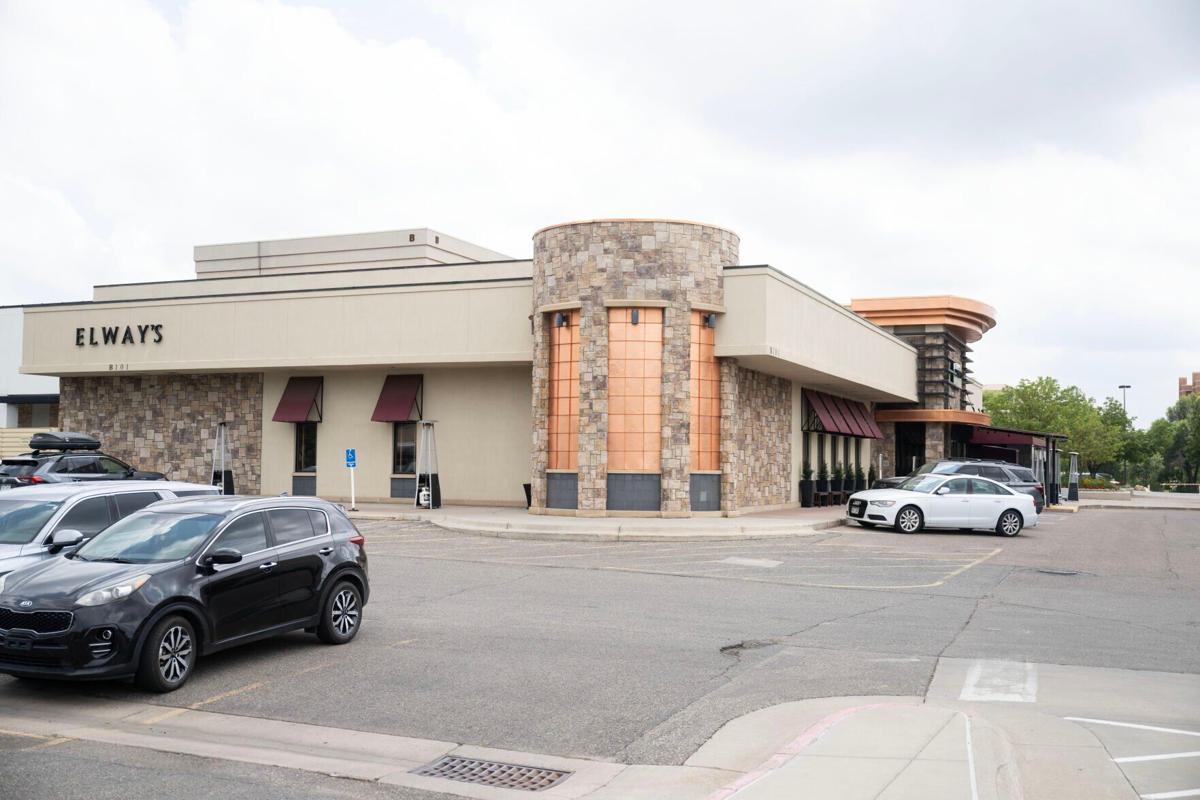
FILE PHOTO: Elway's announced it would be closing its Cherry Creek location on Aug. 31, 2024, before construction begins on the proposed Cherry Creek West development project. Buildings on the site are expected to be demolished in spring 2025, according to East West Partners. (Stephen Swofford, Denver Gazette)
Stephen Swofford / Denver Gazette

FILE PHOTO: Elway’s announced it would be closing its Cherry Creek location on Aug. 31, 2024, before construction begins on the proposed Cherry Creek West development project. Buildings on the site are expected to be demolished in spring 2025, according to East West Partners. (Stephen Swofford, Denver Gazette)
What’s next for the project?
The redevelopment will take about a decade to be completed, East West Partners said.
The developers will also start finalizing designs on the open spaces and the buildings planned for the site.
Work will begin on internal roads and utilities by the end of this year, the developers said. The buildings on the site are set to be demolished by next spring.
Groundbreaking on the project is expected to happen in summer of 2026, with Phase 1 of 2 set to be finished by 2029.
“With the rezoning complete, now comes the fun part,” Cara said in the release. “We can begin to design the public spaces and the individual buildings and watch this community really start to take shape.”
Meanwhile, another major redevelopment is going through City Council.
The project to turn Ball Arena’s parking lots into a massive, 55-acre neighborhood is scheduled for a slew of public hearings next month.
The plan, as it stands, will see the parking lot transformed into mixed-use residential buildings, which includes provisions to set no height restrictions if affordable housing is included. The new “connected neighborhood” could welcome thousands of new residents and create a so-called “sports mile,” connecting Ball Arena, Empower Field at Mile High and Coors Field.
One of the measures to rezone Ball Arena to allow the redevelopment appeared for a first reading Monday but must still appear before the council a second time before adoption. A public hearing is scheduled for Oct. 21.
Denver Gazette freelance writer Mark Samuelson and reporter Alex Edwards contributed to this report.




